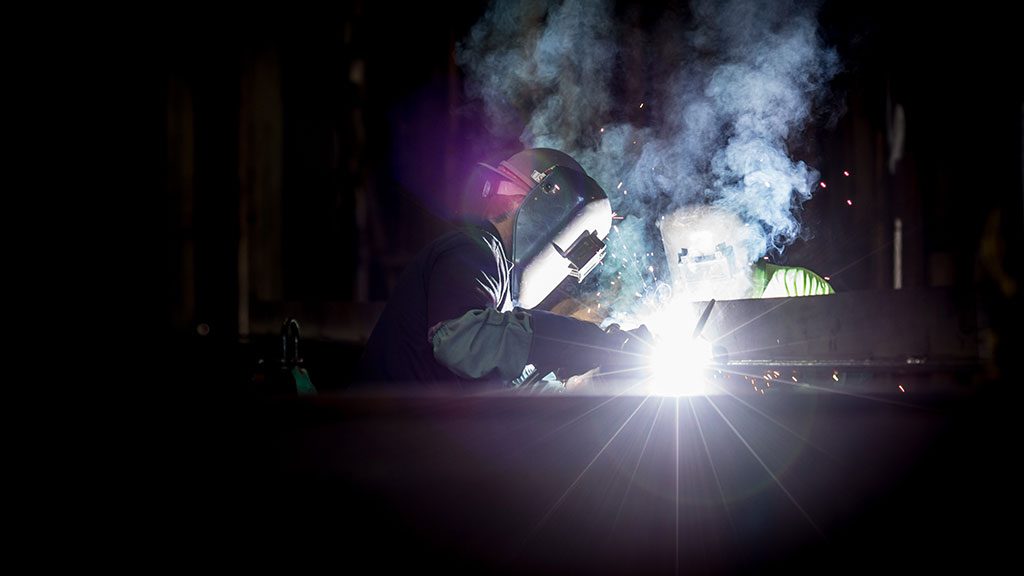As baby boomers retire, Canada faces a critical shortage of skilled workers in trades jobs.
In the province of British Columbia, which leads the nation in economic and job growth, 70 per cent of job openings in the next 10 years will be due to retirements.
Faced with a shrinking labour pool, it is essential that businesses be smart about leveraging all available sources of talent, including women.
Trades jobs are expected to make up 11 per cent of all job openings in B.C. in the next decade which equals over 100,000 jobs. Doors are opening for women who want to pursue careers as plumbers, electricians, carpenters or sheet metal workers — to name just a few.
However, women continue to be under-represented in the trades. The Industry Training Authority (ITA) funds Women in Trades Training programs through the Canada-BC Job Fund that provides training, financial assistance and support for eligible women who are unemployed and need skills upgrading.
Yet, as of March 31, 2017, women represented just 10.3 per cent of registered apprentices in B.C. and only five per cent of registered apprentices in the construction sector.
There has definitely been an upswing of women entering trades careers; and clearly, there is still room for progress. In fact, when 15 per cent of a workforce comprises women, a workplace becomes more accommodating and welcoming. The workplace dynamic changes.
A diverse workforce helps employers recruit and retain skilled workers, increases sales and productivity, increases employee morale and reduces absenteeism.
The Canadian Apprenticeship Forum lists other benefits to hiring women into skilled trades.
For one, a diverse workforce enhances a company’s reputation, especially when it mirrors the community. And since female customers influence up to 80 per cent of buying decisions, it makes sense to have a female perspective on staff when making business decisions.
Furthermore, female workers have shown greater attention to detail, which reduces costs. And finally, women are often committed to staying in their communities, making them a stable workforce.
There is a growing interest in trades careers amongst women in B.C. and the ITA is committed to ensuring the right resources are available to turn curiosity into opportunity.
Through the ITA’s completion staff and regionally dispersed apprenticeship advisers, we can stay connected with tradeswomen like Jaymee Lynn, a carpenter apprentice, who participated in the ITA’s Youth Train in Trades program, a dual-credit program that allows students to begin the work-based training component of their apprenticeship while still in high school.
Upon graduation from high school, Lynn had a full-time job that she loves, and now advocates for other women to consider a career in the skilled trades.
“I was not only walking across the stage at my commencement with a high school diploma in my hands, but my first year of technical school was complete and I had a whole career ahead of me,” she said.
To help employers provide an excellent apprenticeship experience for women, the ITA created Leveling the Field: A Best Practices Guide to Employing Women in the Trades. It covers recruitment and hiring, orientation, developing and maintaining a safe and welcoming workplace and retention of women employees.
Electrical unions, like IBEW2, are taking a proactive approach to diversifying their workforce by having a goal of 20 per cent of their apprentices to be women by 2020.
The ITA wants to support employers in making a welcoming workplace the norm. Doing so will help attract more female employees like electrician apprentice, Hilary Douglas. Her inclusive employer welcomed her as a key member of the team.
“I found that men generally find it easier to display confidence in their work at any level of trades training,” said Douglas.
She wanted to find a company that would support her career growth and make it comfortable for everyone to show confidence in the work.
“I developed a relationship with a good company and felt they saw me for my strength, so I decided to join them full time. I feel valued by my employer,” she said.
In the spirit of International Women’s Day on March 8, we encourage skilled trades employers to start building an inclusive labour force, right now. Not only will it help your business to grow, but more importantly, it is the right thing to do.
Tara Fong is the manager of the Canada-British Columbia Job Fund Programs at the ITA.
Send comments and Industry Perspectives column ideas to editor@journalofcommerce.com.











I am semi retired from the construction industry and it is great to see more women in the trades I know it’s not for every one but is a great stepping stone for future
I found most contractor are not willing to sponsor the young people they need for the future. There excuse why train them they just quit
1- This is the price of doing business
2- if you can’t show the younth a future they will not stay
3- if you can’t retain people maybe you need new management